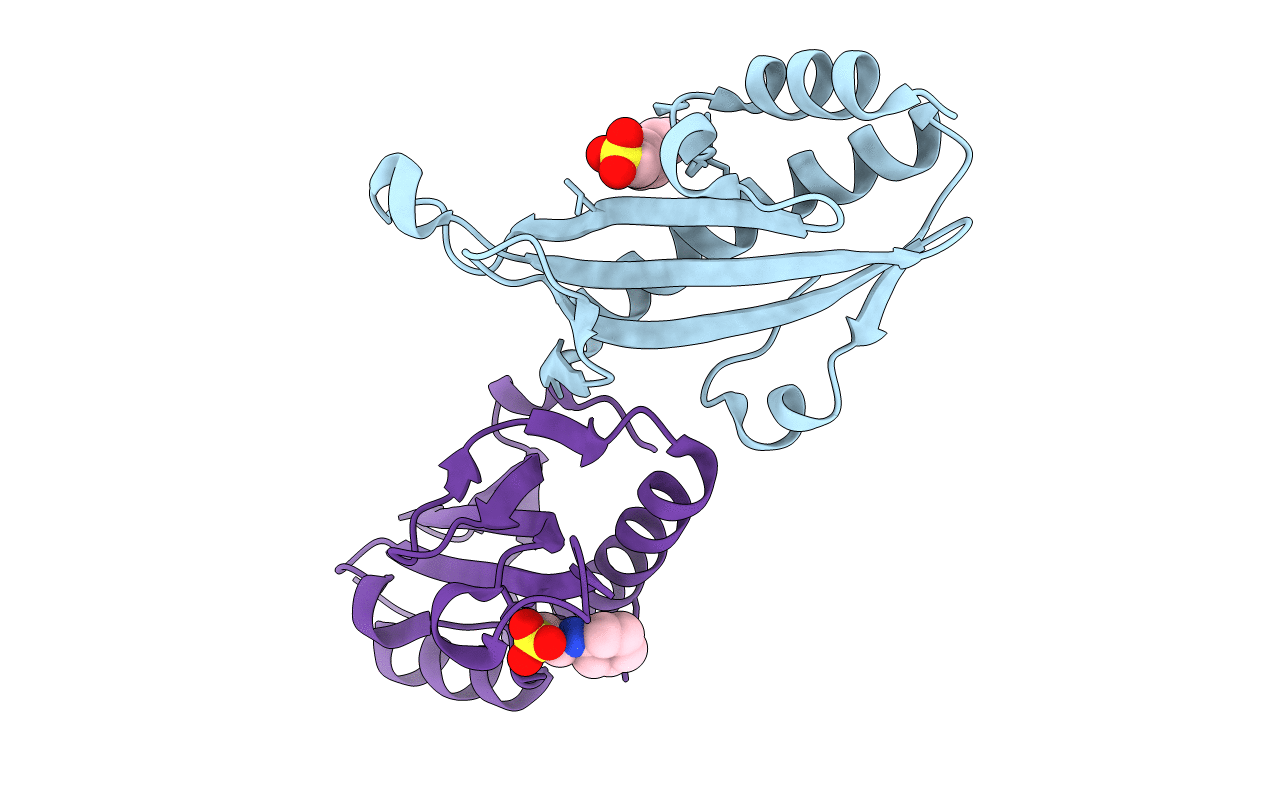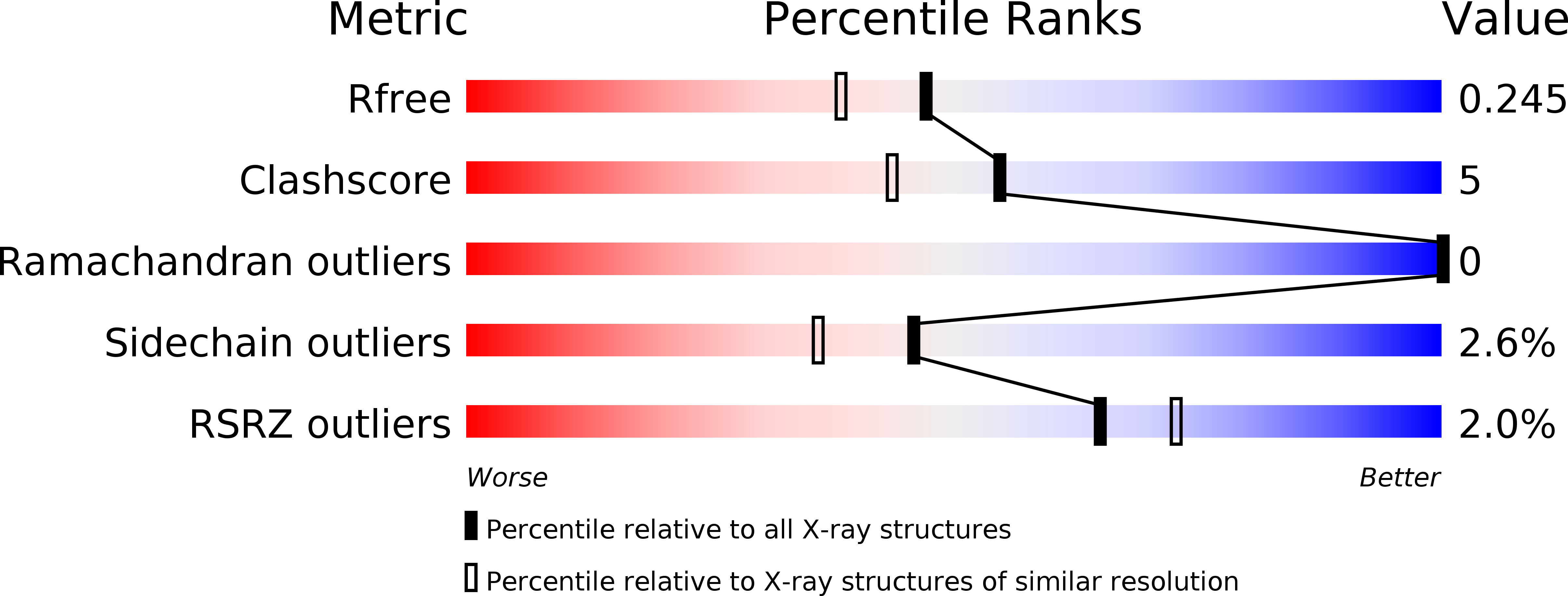
Deposition Date
2014-04-02
Release Date
2014-08-06
Last Version Date
2023-09-20
Entry Detail
PDB ID:
4Q11
Keywords:
Title:
Crystal structure of Proteus mirabilis transcriptional regulator protein Crl at 1.95A resolution
Biological Source:
Source Organism:
Proteus mirabilis (Taxon ID: 529507)
Host Organism:
Method Details:
Experimental Method:
Resolution:
1.95 Å
R-Value Free:
0.23
R-Value Work:
0.18
R-Value Observed:
0.18
Space Group:
P 1 21 1


